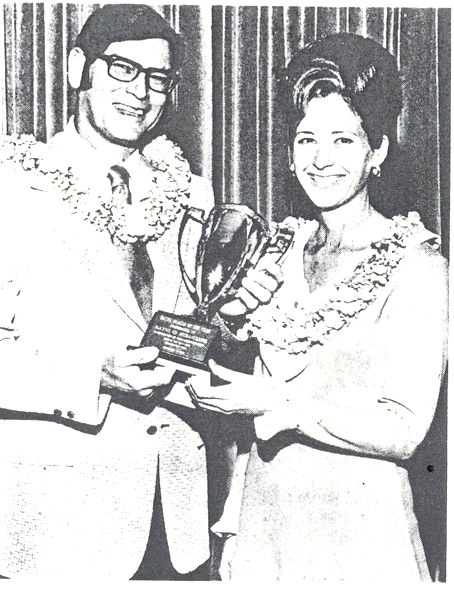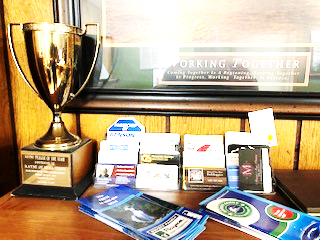https://www.newsweek.com/millions-americans-drink-water-could-be-dangerous-1438023
This news article points out that the United States has some of the safest waters, but we face many water quality and water safety challenges.
For example, on May 6 researchers at the nonprofit Environmental Working Group and Northeastern University reported that 43 states have sites where water is contaminated with toxic fluorinated compounds known as PFAS. And many farm workers in California’s Central Valley have to buy bottled water because their tap water contains unsafe levels of arsenic and agricultural chemicals that have been linked to elevated risks of infant death and cancer in adults.
An example of some of the challenges are brought up by a nonprofit that published 43 states have water sites contaminated with PFAS.
What is PFAS?
Perfluorooctanesulfonic acid is an anthropogenic fluorosurfactant and global pollutant. PFOS was the key ingredient in Scotchgard, a fabric protector made by 3M, and numerous stain repellents. It was added to Annex B of the Stockholm Convention on Persistent Organic Pollutants in May 2009.
https://en.wikipedia.org/wiki/Perfluorooctanesulfonic_acid
This article also points out that we should not be so proud of our quality water – 8 percent does not meet EPA requirements. Waterborne disease is creeping back.
The EPA also provides funding to states and communities to monitor and test water supplies. This support is essential as the agency develops new standards and monitoring approaches for emerging contaminants, such as PFAS. However, the EPA’s annual appropriations budget for water infrastructure has been virtually flat since 2000.
An organization called The American Society of Civil Engineers told the US; I give you a D on your infrastructure report card. Our system has many leaks and present are legacy contaminants such as lead and newer threats like PFAS.
In recent years – Nationwide – water system compliance health standards are declining.
The most common violations were bacteria found in the water and fecal contamination because of inadequate treatment.
32 million cases of waterborne disease occur nationwide every year. Center for Disease Control : 42 outbreaks in 2013, 2014; 1,006 cases of illness, 124 hospitalizations and 13 deaths. These are failures of the water industry. It is similar to the aviation industry disaster: a plane crashes.
Climate change is having a big impact on the water industry in these ways:
More intense storms and flooding (bad for water quality)
Extreme precipitation and floods was contaminants from sewage and animal manure into our drinking water.
Rainfall transports fecal contamination – from the poop of humans and animals right to our rivers and lakes.
8 percent failure rate is not acceptable.
Here are some recommended solutions to this very serious problem:
Spend more time and money to monitor water supplies and develop diagnostics that can detect emerging pathogens, like protozoa and viruses.
All the work done on Cryptosporidium led to new rules for water monitoring and treatment.
Today technologies are utilized to determine if the fecal pollution is human or animal (targeting impaired waterways before outbreaks occur).
Another thought is to fund pilot plants that show new technologies to reduce waterborne disease.
The water providers and regulators need to raise their standard. A once percentage improvement will be significant, but let’s all come together to achieve 99.999 percent compliance.
Are there water treatment technologies capable of removing PFAS from the water?
Yes
According to the EPA activated carbon treatment, powder carbon treatment, reverse osmosis, nanofiltration, ion exchange resins and high pressure membranes will remove PFAS from the water.
Granular Activate Carbon (GAC) – PFAS and other chemicals will stick to the small pieces of carbon when water passes through.
Powdered Activated Carbon (PAC) – Powdered carbon is added to the water. As the chemicals pass through they stick to the carbon.
Ion Exchange Resin work as magnets – the small beads (called resin) work like magnets. As the water passes through – the chemicals stick to the beads.
Reverse osmosis and Nanofiltration; with these processes the water is pushed through a semipermeable membrane. The holes are very small. It is like a wall that stops all the chemicals and particles (they will not pass into the water).
These are the water treatment methods suggested by the EPA to remove PFAS from drinking water.
https://www.epa.gov/pfas/treating-pfas-drinking-water
Boyett’s family water treatment specializes providing these forms of water treatment:
Granular Activated Carbon (GAC)
Powdered Activate Carbon (PAC)
Ion Exchange Resin water treatment
And Reverse osmosis and nanofiltration.
Our company has a long history of being the best in the nation.

My parents picture in the Tempe (Arizona) Daily News Thursday, February 3, 1972
Mr. and Mrs. Brian Boyett show off the trophy they received as outstanding Rayne franchise dealers in the country. They aren’t wearing those leis as decorations either. As part of the award, they will take a trip to Hawaii-free of charge. The Boyett’s have operated the Mesa-Tempe franchise for six years. We have this trophy displayed in our office today

When I think of my parents – I think this thought: exceptional people.
I was fortunate to get involved in our family business at an early age. My parents always made me feel welcome here.

When I was 15 I began my route sales career at my family’s company. I earned my driver’s license by enrolling as many neighbors in our rental soft water service and reverse osmosis service (riding my bicycle and on foot). When I reached the age of eligibility I presented to my parents that I needed to expand my marketing area (I will need to drive to work more efficiently). They acquiesced.
When I think about my parent’s water treatment company here are some thoughts that I have:
One of the exceptional water treatment companies in Phoenix Arizona; One of the water treatment companies in Phoenix Arizona with a long track record; one of the best water softening companies in the San Tan Valley Az helping to solve a bad water situation there; one of the best water softening companies in Gilbert Az (when I was growing up I remember the people in Gilbert mostly wore cowboy and cowgirl boots); one of the very best water softening companies in Coolidge Az (Coolidge Arizona; where the Casa Grande Ruins National Monument presides. This great monument is designated as the first site to receive recognition and protected status by the United States Government in 1892; also home to Central Arizona College). Our organization is one of the water treatment companies in San Tan Valley AZ (to help the wonderful people here with a significant hard water that has very high TDS ‘total dissolved solids’).
